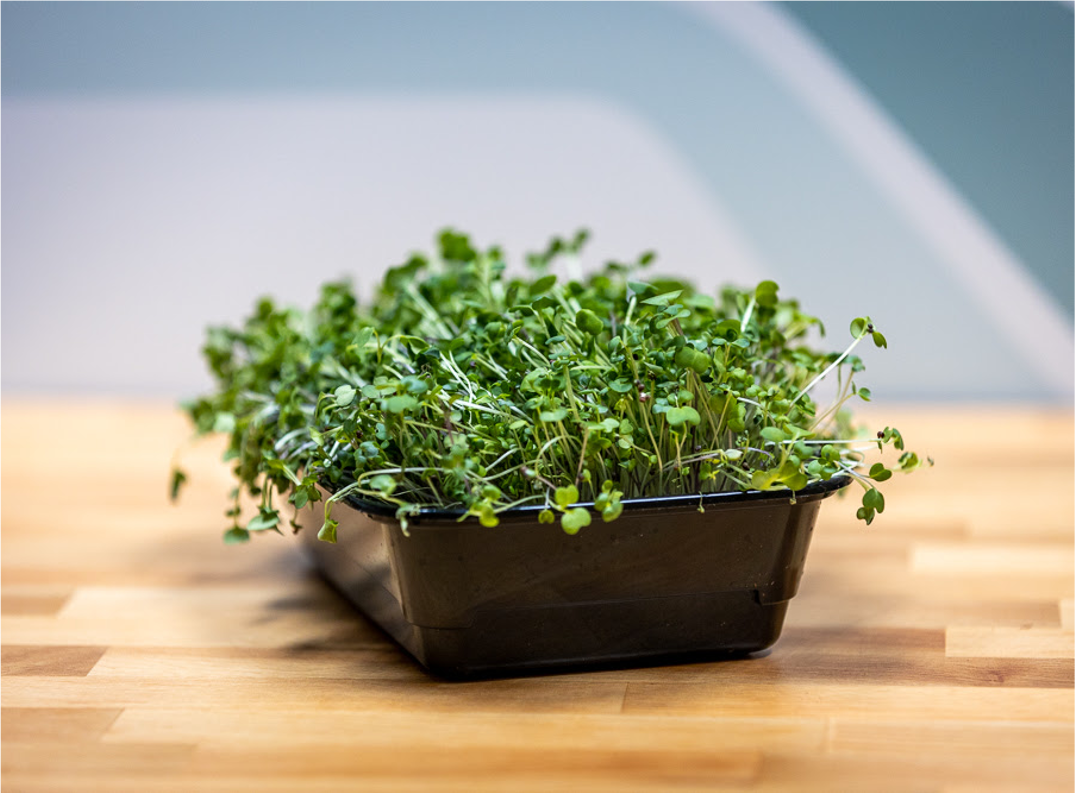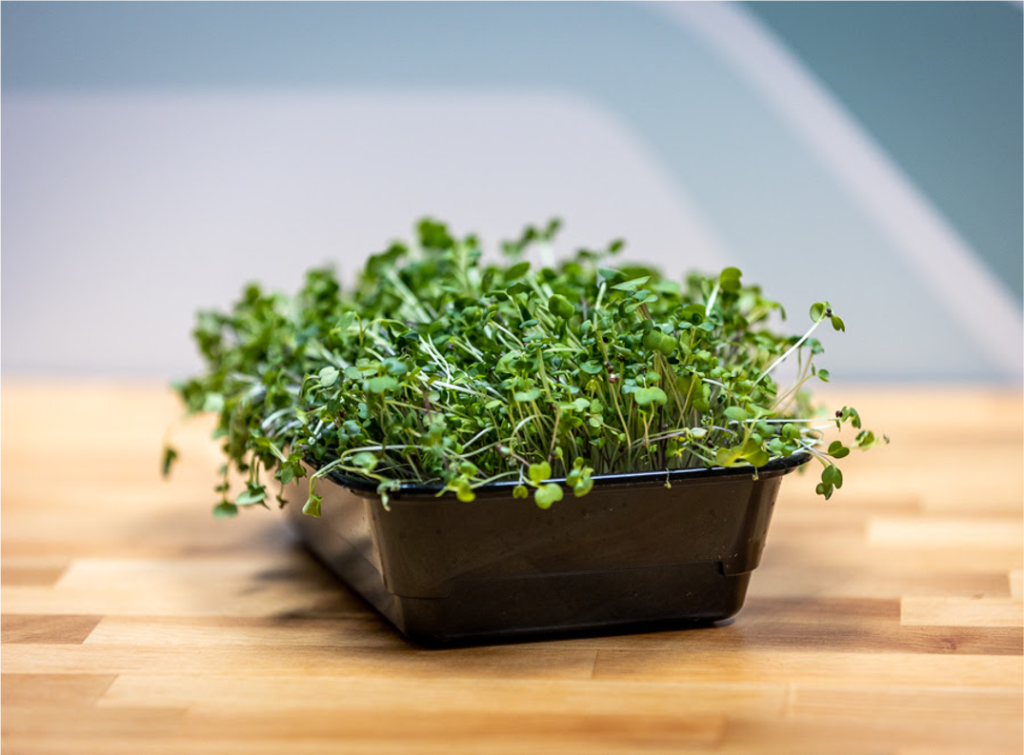Fight Cancer with Broccoli Microgreens

While attending the North Carolina Integrative Medical Society Conference on June 10-11 in Raleigh, I heard Dr. Emily Ho, PhD, from the Linus Pauling Institute at Oregon State University share her passion for broccoli and its phytomedicine features.
Ho focused on the cancer fighting properties of this sulforaphane-rich vegetable. Sulforaphane is a phytochemical in the isothiocyanate family and can slow tumor growth and delay progression of cancer. It does this as an epigenetic modulator changing how genes are expressed.
Ho noted that eating broccoli microgreens are a more potent way to get sulforaphane into the diet. She recommends eating the broccoli microgreens at about 10 days old when they have more than 10 times the sulforaphane of mature broccoli.

Microgreens are the 10-14 day old young seedlings of some vegetables and herbs. Although they have been served in restaurants for 40 years, we are still learning about their amazing benefits and just starting to incorporate them into our own meal prep. Just as different vegetables contain different beneficial phytochemicals, different vegetable microgreens have specific concentrations of different phytochemicals. This research, conducted at the University of Maryland, investigated four phytochemicals in 25 different types of microgreens comparing the concentration to that found in mature plant parts (more commonly consumed).
Adding a variety of microgreens to salads, sandwiches, bowls, and smoothies offers a phytochemical boost for general health. Cilantro or garnet amaranth microgreens specifically support eye health because of their high levels of lutein and zeaxanthin. Patients with cancer or a strong family history can take advantage of the sulforaphane levels in broccoli microgreens.
The great thing is, microgreens can easily be grown in the kitchen. No green thumb is required and they are handy to snip and add to whatever dishes are already being prepared. Watch (and share) this video from my PHHI colleague, Amy Bowman, to see how easy microgreens are to grow. You may even decide to start some in the office!
- Categories: